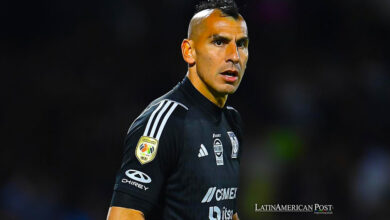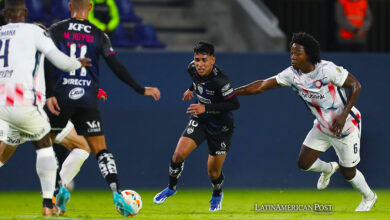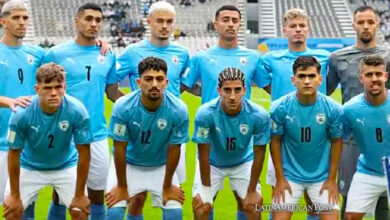What is the Nations League and How does the System Work?
This new competition at the national team level will add Colombia, Peru, Argentina and some other South American countries in 2024. We explain what it consists of in detail.

Photo: Wikimedia-Wackotaku
LatinAmerican Post | Ariel Cipolla
Listen to this article
Leer en español: ¿Qué es la Nations League y cómo funciona su sistema?
There are more and more changes in soccer at the national team level. Not only is there the possibility of playing the World Cup every 2 years or the confirmation of a final between the winner of the Copa América and the Eurocup, but new competitions have also been created to increase the number of matches. One of them is the UEFA Nations League, which seeks to position itself as one of the best European tournaments… and now also in Latin America.
It is an official soccer tournament that the UEFA teams play every two years. The first edition was held in the 2018-2019 season, where Portugal became champion against the Netherlands. For the last season, 2020-2021, France beat Spain and lifted its first trophy.
From 2024, the ten South American teams from CONMEBOL will join this league. It would be Argentina, Brazil, Colombia, Chile, Peru and Uruguay, which would reach League A, where they would face teams of the same level, such as Germany, France or Italy.
On the other hand, the "weakest" teams in the region, such as Bolivia, Ecuador, Paraguay and Venezuela, would reach League B. They could run into nations like Sweden, Serbia or Russia. Now, being such a recent competition, it is common for doubts to arise regarding its operation. We tell you everything below!
All about the UEFA Nations League
Also known as the UEFA Nations League, the idea is for it to be a complementary competition to the Qualifiers (both in Europe and Latin America) and to serve as a new trophy that would also be added to the already prestigious European Championship and the America Cup.
Well, the Nations League has, so far, four leagues. These leagues are divided into letters: A, B, C and D. The first 3 have 16 teams, while D has only 7. This is explained because in UEFA there are about 55 members who are divided into all divisions.
In turn, the first three leagues are divided internally into four groups and the last league into two. The members of the divisions must play home and away matches. The winners of sections B, C and D are promoted to the higher division, while the winners of section A can reach a play-off to determine the champion.
For the 16 triumphant countries of the groups there is a prize: the possibility of qualifying for the European Championship or the World Cup, depending on which competition is closer. On the other hand, the worst of each group of the corresponding divisions will descend in category (except in D). The distribution of the teams of the first edition was determined by the FIFA index, but currently it is maintained according to what happens in the Nations League.
For example, in the last edition Albania, Armenia, Austria, Slovenia, Wales, Gibraltar, Hungary, Montenegro, the Czech Republic and the Faroe Islands were promoted. Instead, Sweden, Turkey, Ukraine, Moldova, Kazakhstan, Iceland, Northern Ireland, Estonia, Cyprus, Bulgaria and Bosnia and Herzegovina fell. Therefore, they will change their zone for the following season.
Thus, this new cup could be important for a preparation with soccer rhythm for the next World Cup, at least in the case of Latin America. Although the Copa América is in our region, it is possible that some countries, such as Argentina or Brazil, do not find the necessary level to anticipate the maximum competition.
For this reason, the possibility of clashing against really prestigious nations, beyond the possible FIFA Friendly matches, will serve for the coaches to test new players and teams. In any case, with the invitation for 2024, it remains to be seen how the issue of promotions, relegations and classifications will be diagrammed, since it involves restructuring part of the system.
For now, it is good news for all soccer lovers. The possibility of generating duels against great European teams will no longer be only in the World Cup, but now they can be seen in each UEFA Nations League.




